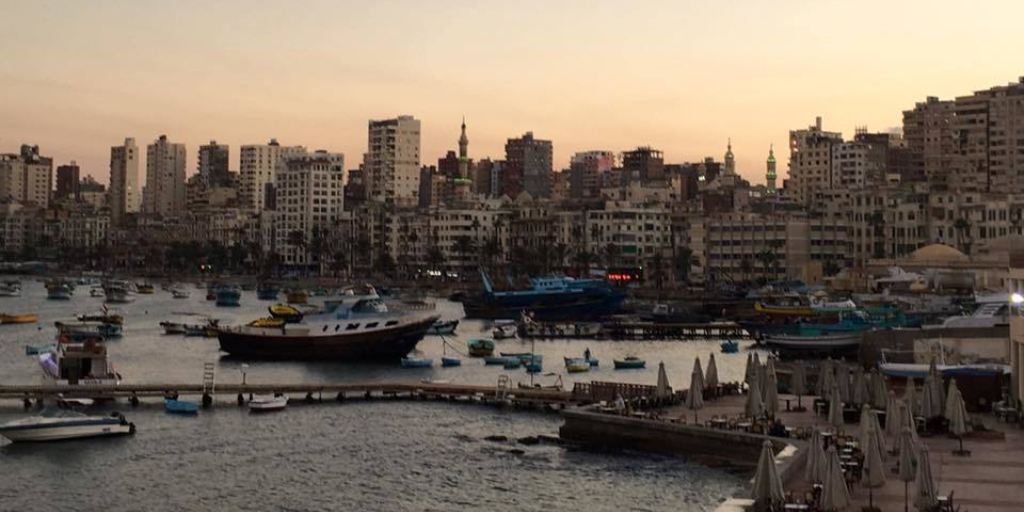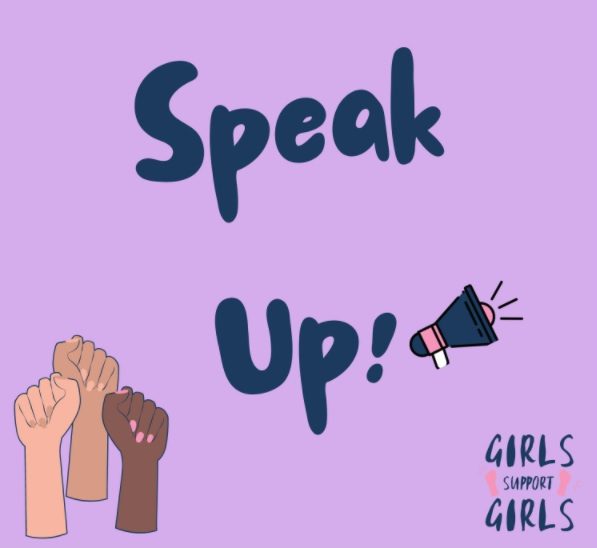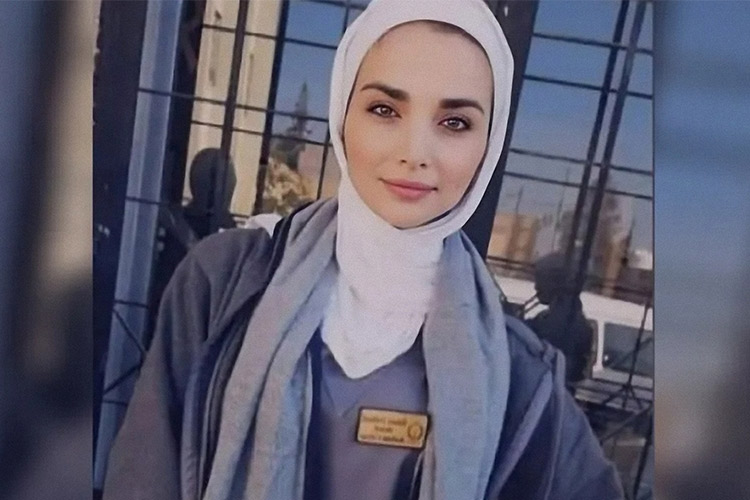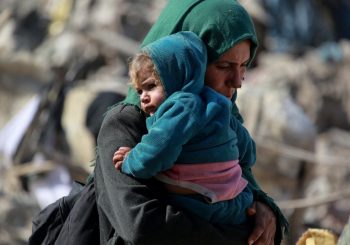On a crisp winter Cairo day, before the first COVID-19 quarantine struck, I got catcalled during my second undergraduate semester, by a group of male students, on campus.
I had almost exclusively worn oversized sweaters back then — not that any outfit justified incidents of harassment.
My reaction was immediately to drown out the world, pop my earphones in, and fast-walk, as I had been taught, away from the premises.
Reporting the incident never crossed my mind. How could I? With no witnesses, I could not even remember anything about the men except that more than one wore blue.
Who would believe their word over mine?
These thoughts were far from new. Throughout the 21 years of my life, I have learned much about surviving in Egyptian society. This knowledge, consisting of observations and advice accumulated across the years, have become basic instincts to navigating life as a young woman.
It is only lately that I have begun doubting whether they can be enough anymore.
101 Advice for Avoidance
Deciphering which places I could be myself and thrive, which places I could merely exist, and which I could not be at all proved to be the most essential lesson I learnt early on.
Like most young women in Egypt, school, university, my home, and occasionally the sports club at which I spent my summers were a supposed safe haven. This represented the inner core of my safety principle.
The outer core included places I venture with family, or at least one of its male members. In Egypt, it is commonly believed that a male’s “protection” supposedly made it tolerable for any female to be in public space, although I could just as easily go to those locations alone, or with a group of female friends. But then, no guarantees of safety could be given. This applied to most public spaces, such as malls or popular tourist destinations.
Beyond the crust, lay the streets of Egypt, and all spaces in which my existence was frowned upon, seen as dangerous or deviant. This included everything beyond the previous categories, and comprised entire neighborhoods, even parts of mine.
This three-tiered recognition system was inferred, not given or taught.
.
And then, there was the advice my mother gave me.
Once my body shed childhood behind, and my height towered over other girls my age, my mother had to give clothing advice.
There was no talk of how to match dresses with heels, or dainty jewelry with the trendiest jeans. Rather, the advice revolved around when and where I could wear what I wanted.
I struggled with understanding this, at first, but then I was catcalled just outside a private beach in Alexandria for wearing overall shorts. I was 11 years old.

Harboring emotions of shame and fear, I stopped wearing them for a long while after that. Until then, I lacked awareness on how to navigate the presence of men on the streets, that lawless void quickly turning men into frightening figures in my life.
When I made an attempt to let my mother know about the incident after it occurred, she failed to comfort me. “It’s all a part of growing up,” she said casually, as if it was typical and expected. Giving a new rule was her solution: just ignore them when it happens. This implied that there would be more incidents to come, naturally, and that too was petrifying.
Men in my vicinity and the possibility of being catcalled again became so terrifying that I followed my mother’s words to heart. Eventually, I attempted to amplify safety measures to the extent that I felt uncomfortable wearing any flattering article of clothing, opting instead for shapeless jeans, black trousers and black oversized shirts. They made me ‘stronger’ in my head which, looking back, actually meant invisible.
Subconsciously, I started equating the space I occupied outside my home-school-club safety net with the probability of encountering an unsafe situation. The more I ventured outside the familiar boundaries, the more likely I was to be targeted for harassment.
Therefore, I adapted by shrinking onto myself, which seemed impossible for my 180 cm statue, an unmissable trait about me. My mere presence turned into a struggle on how not to take too much space, just so I would stay unperceived, and unbothered, by any men. Still, the lessons and my mother’s advice did not shelter me.
Although I most certainly tried controlling my clothing, the fine line between speaking out or staying silent was tricky.
Refusing to respond to a man’s persistent catcalls can be dangerous: what if he takes my silence as acquiescence and follows me home? Alternatively, screaming and fighting back can be detrimental as well: what if he takes it as a challenge and decides to assault me where not a single scream could be heard? Worse, what if the bystanders blame me for wearing whatever I was wearing, even though it is not “revealing” by my standards?
Around the time they reach high school, most girls come to the same conclusion I did: we are not allowed to exist on the streets, at least never as freely and unapologetically as men. In 2011, the Cairo Safe City and Safe Public Spaces programme was launched, highlighting that millions like me were disempowered in public spaces. Women could never walk around, proudly parading confidence in a new outfit without thinking a million times about the consequences.
And, I perpetually question if the men will stare, if they will whisper, if they will touch.
I naively thought that all that was okay to go through every single day. I did not need to exist on the street if it would not have me. There would be university one day, after all.
Shattered Fantasies: the Reality of University Harassment and Murder
When I was 15, eerily similar to my then favorite show Girlmore Girls’ protagonist, Rory, whose goal for the first seasons was to go to an Ivy league college, I had grandeur visions about what I would do when I enrolled at university.
Having watched a copious amount of coming-of-age movies and college dramas where freshmen enjoyed their youth, signing up for activities and juggling their studies with other pursuits, I too dreamt of the place I could do it all, where the possibilities, were endless and I was free, safe, to pursue them.
There, I thought, I would not need any methods of avoidance. I was to learn, be creative, and speak out when I wanted to. University, afterall, was placed inside the inner core.
Yet, since 2018, along with the National Council of Women (NCW), the United Nations Populations Fund (UNFPA) established Anti-Sexual Harassment Units in 23 public universities nationwide. Reports of female students at universities facing blackmail, leakage of private photography, and unwelcome advances by both students and professors poured in.
My illusion started to disperse.
I found myself conscious of my choice of clothing yet again, afraid of harassment on my university’s campus or near it.
These feelings exacerbated when I eventually faced the catcalling, once again, on campus.
When teaching shifted online, I was more relieved than most. I did not have to feel my body tighten or hold my breath, just to walk across a hall.
Eventually, we had to resume normal in-class lectures in Fall 2020, with most classes offering a hybrid learning option. I harbored an inner belief that perhaps reality was different, women were finally speaking up on the internet, sharing experiences similar to mine.

Though not necessarily confined to academic settings, reading how female friends found the courage to survive situations where they were being harassed, catcalled, attacked, or even assaulted, gave me hope that I too would be able to.
Even the stories which had found those women paralyzed in time, like myself, with fear to even contemplate seeking help, felt validating— I was not alone.
Then, this summer happened.
Two bone-chilling murders reminded me that, far from safe, universities were sometimes fertile grounds for not just harassment but heinous crimes against women.
Nayera Ashraf and Salma Bahgat experienced it first hand.
Ashraf, 21, was killed in broad daylight, as an act of revenge, after she refused to marry another student in Mansoura university. Bahgat, 20, had faced the same fate in Zagazig for choosing to end her relationship with her suspect murderer.
Both Ashraf and Bahgat were not killed on university grounds. However, Ashraf was killed right outside campus and Bahgat would have been killed inside had the accused managed to carry out his original plan on 29 June. One that involved killing her after, or even during, her bachelor’s thesis discussion.

It was hard not to draw the parallels, explore the what ifs, and reach the conclusion that I, or any of my friends, could be them at any moment.
An old acquaintance of mine had recently rejected a boy from her university. A day after Ashraf’s case, she says he messaged her jokingly that “she’s next.” He might have been bluffing to make small, albeit distasteful, talk but Salma’s killer was not when he told her she would meet the same fate.
How, then, are wewomen to discern when we really are in danger? The answer is to just assume we are, live life by default as though we are subject to men’s whims at any time because saying no is equated with a death sentence.
The most horrifying aspect was not just the gruesome murders, but also the horrendous reactions on social media.
Instead of finding swift condemnations of such brutal acts, there were posts and comments blaming Ashraf, saying she deserved her fate for dressing the way she did, for opening way to her murder, and for manipulating the perpetrator. The tip of the iceberg was finding men from my own university sharing those views, which were fueled further by Mabrouk Attia, a professor of Islamic Shariah at Al-Azhar University, who implied on his television show that non-hijabis would be similarly killed if they did not “fully cover up.”

Many were less harsh on Bahgat, who was a hijabi, but they still blamed universities for allowing “mixed” education between men and women. That was the reason for all this, they argued, not the deranged mind of a killer.
How am I to feel safe when the boy sitting two rows ahead of me in class every Monday thinks I deserve to die because of the way I dress, or because I refused to accept him as a suitor? How am I to feel when he shares a post saying I should not be allowed into university, that male-female franerization is against religion, and that I should find somewhere else to learn away from the men?
The terrifying thing is that this insecurity I embody translates across borders; it is not a unique Egyptian phenomenon.
In Jordan, Eman Ersheed was fatally shot five times on university campus for refusing to speak with a man, also inspired by Ashraf’s killer.

In Chicago, where I am traveling for the first time to study as part of an exchange program, Ruth George, is a testament as to how female students are subject to catcalling and murder just as much.
The question begs itself, ringing loudly in my mind. If universities everywhere are unsafe, even thousands of miles apart, where should the scholar part of me exist, let alone thrive?
The opinions and ideas expressed in this article are the author’s and do not necessarily reflect the views of Egyptian Streets’ editorial team. To submit an opinion article, please email [email protected].






Comments (0)